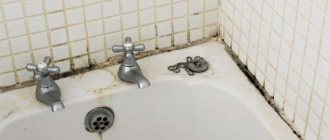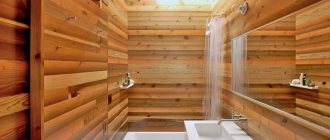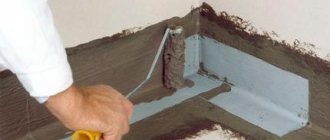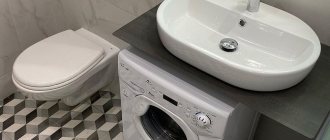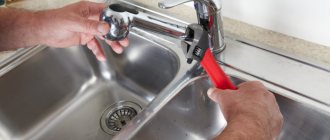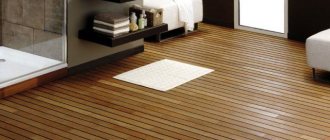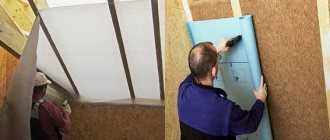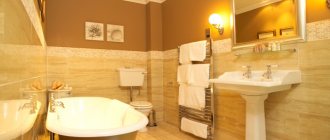Sealant is an indispensable building material when carrying out plumbing and renovation work in the bathroom. Silicone sealant protects against moisture and creates a durable and elastic coating between the seams. Not afraid of temperature fluctuations and chemical detergents. It often happens that black and moldy spots appear on the surface of the sealant. Fungal spores pose a great danger to people. May cause allergies. You need to remove mold in the bathroom from caulk as soon as you discover it. Spores fly through the air and can migrate to any surface.
To avoid mold, experts recommend using a special “fungicidal” composition that has antibacterial properties. The additives in it will prevent mold and fungi from appearing.
Why does mold form?
Mold formation can occur for several reasons. The most important reason that influences the formation of mold in the bathroom on sealant is increased air humidity.
Additional factors include:
- Malfunction of the ventilation system.
- Insufficiently insulated walls.
- Poor sealing of seams.
If the sealant you used contained fungicides, then the mold formation was due to poor product quality. If you used a product from a reputable manufacturer, then the reason will be something else. For example, quite often mold can form due to poor quality sealing. Therefore, before carrying out work, you should select a high-quality sealant for the bathroom against mold and study all stages of the work.
Mold Resistant Sealants
Sealant is an insulating material in the form of a gel or paste. It is used at the joints of structures. In order to prevent the formation and spread of mold, antibacterial additives are added to them.
Silicone based
The best anti-mold bathroom sealant is made from rubber-based silicone.
The material is popular due to its excellent physical and chemical properties:
- resistant to acids, alkalis, oils, alcohols, ultraviolet radiation, radiation;
- withstands temperature range -50 + 200ºС;
- moisture resistant;
- differs in adhesion on many surfaces of glass, wood, plastics, metal, enamel;
- produced in different colors.
Silicone sealants are divided into two types:
- Acidic, containing acetic acid. They are affordable and dry quickly. But they emit vapors that are harmful to humans and lead to the oxidation of metals.
- Neutral - safe for humans. Can be used on any materials, including acrylic and metal. They cost more than acidic ones.
KIM TEC Silicon 101E is a durable silicone sealant-adhesive on an acetate base with additives resistant to fungi. Polymerizes in air into a rubber compound. Not for use with materials sensitive to acetic acid, polyethylene and films. Viable at temperatures -50...+180 ⁰С. Designed to work with plumbing and craft materials. Can be used indoors in swimming pools.
Pufas Silikon Fugendicht - suitable for sealing wide joints with a thickness of up to 25 mm. Curing time 3 mm per day. Elastic, stretch up to 25%. Applicable to all materials except stone and galvanized metals. Has fungicidal additives against mold formation.
Moment sealant sanitary - designed for sealing seams, joints, voids in bathrooms, kitchens, showers, glazing frames. For gluing parts made of ceramics, metal, wood. The one-component silicone composition has antiseptic additives against the occurrence of fungus and mold. Can be used indoors and outdoors. Resistant to chemicals and water, elastic.
For wet rooms, a sanitary sealant with fungicidal additives is used that is resistant to the formation and spread of mold.
Based on acrylic
Acrylic-based sealants vary in their degree of moisture resistance. Non-moisture-resistant material is additionally protected with pastes.
Pros of acrylic:
- hardens quickly and gains maximum strength within 24 hours;
- diluted with water to the desired consistency;
- non-toxic, odorless;
- UV resistant;
- does not turn yellow;
- Cured plastic is easy to dismantle.
Cons of sealant:
- hardened sealant is not plastic;
- with prolonged exposure to moisture, it peels off from the surface.
Pufas Acryl Fugendicht A30 is an acrylic sealant with fungicidal additives. Flexible and waterproof once completely dry. Suitable for wet rooms when working with concrete, plasterboard, ceramic tiles.
Tekadom Acryl Profi - suitable for sealing joints in mineral materials and wood. The seams that have gained strength are tensile by 15%. Before compaction, the surfaces are cleaned of dirt and may be damp.
VGT sanitary acrylic - used in bathrooms, showers, when processing seams in materials made of glass, wood, ceramics, metal, PVC. The room must be dry during operation. The sealant is not suitable for sealing areas where there is constant accumulation of water. The strength of the connection is achieved within 24 hours.
One-component acrylic materials are not used in damp rooms in places where water accumulates.
Based on acrylic silicone
Acrylic sealant with the addition of silicone is a two-component material. Available in transparent or colored.
It is moisture resistant, but just like one-component, it peels off with prolonged exposure to water. The composition includes antifungal additives. Suitable for wet areas, provided there is no direct contact with liquids.
It is applied with a thickness of 5-6 mm. The prepared surface must be clean and always dry. Moisture is allowed to enter the surface after complete hardening.
Fome Flex silacryl is a silacrylic sealant with antifungal additives. Used in sealing joints of shower cabins, bathtubs, tiles. Odorless, tolerates moisture well, resistant to fungus. It is used in shallow seams, as it hardens slowly 1-2 mm per day. Can be painted after drying.
Auster silacryl differs from the previous sealant in that it is not suitable for use in areas with large accumulations of moisture. Also has anti-mold additives.
Based on polyurethane
Polyurethane sealant is developed on the basis of polymers. Used for sealing new and old surfaces after repairs. Adheses to silicone residues. Dries in 12 hours.
Positive properties:
- adhesion on any materials (ceramics, concrete, enamel, plastic);
- moisture resistance;
- maintainability;
- long service life.
They produce one- and two-component polyurethane sealants. For polymerization of the former, the presence of oxygen is necessary. The second contains a hardener.
These sealants can be used to fill deep seams that, when dry, resemble rubber. The material is used not only for insulation, but also for gluing surfaces. It is used to glue plastic or metal baseboards in the bathroom. The adhesive layer can be adjusted and imperfections can be eliminated within 20 minutes.
Polyflex 442 is a medium-modulus sealant for interior and exterior use. Tolerates exposure to fresh and salt water, grease, and cleaning agents. Elastic, used in expansion joints.
Tytan power flex - silanized polymer, adhesive, sealant. Suitable for gluing porous and non-porous materials (glass, stone, metal, plastic). Forms a strong, elastic, waterproof seam. Cures 4 mm per day.
Rubberflex PRO PU-25 - for sealing joints of building structures made of concrete, metal, wood. Withstands temperatures -60…+90ºС. Tolerates precipitation and moisture well. Forms a strong elastic connection, has good adhesion to concrete, granite, glass, wood, PVC. Does not require preliminary priming of the surface and can be painted.
Before applying any sealant, the surface is cleaned and dried. After installation, protect the surface from dust, moisture and dirt until the seal is completely dry.
Which to choose?
Silicone, acrylic-silicone, polyurethane sealants are used in places where water accumulates. Neutral seals are universal, chemically resistant, suitable for any materials. Acetate-based compounds are not used on materials that are vulnerable to acetic acid.
Expansion movable seams are filled with polyurethane sealants, as they have high elongation. Holds well in wide cavities 6-25 mm.
Acrylic sealants are the weakest. They do not stretch well and require low air humidity during work. Used to fill joints in mineral materials.
Each category produces products with antibacterial additives.
Danger of mold in the bathroom
Mold is a truly unique organism. In some cases it can be beneficial, but sometimes it can be harmful. Mold that grows on a variety of surfaces in your home can cause health hazards. That is why it is necessary to get rid of it as soon as possible. Mold spreads through spores. They can move freely around the house and, accordingly, appear in different places.
See also: How to get rid of mold in the seams in the bathroom?
The harm to the human body caused by mold in the bathroom on the sealant is not immediately noticeable. The spores that we inhale will most often affect the respiratory organs. The high-risk group will include people who have a variety of respiratory problems.
Why is it dangerous?
Mold feeds on organic remains and breaks down complex substances into simple compounds.
The negative impact of the fungus manifests itself as follows:
- by feeding on organic matter, it contributes to the destruction of materials;
- spoils the appearance of the finish;
- releases spores that infect new areas;
- causes aspergillosis;
- has a toxic effect, accumulating in the human body.
Forming on sealant and tile joints, mold penetrates deeper. Moving onto load-bearing structures made of concrete, slag, plasterboard, wood, the fungus makes them loose.
Mold Removal Process
At the moment, many people are interested in the question of how to get rid of mold on the sealant in the bathroom. If you notice a small area with mold, then you can simply wash it off and subsequently treat it with a special product. If everything is done correctly and really quickly, then mold will no longer return to your home. Otherwise, you may need to resort to drastic measures. To get rid of mold you need to follow these steps:
- Fill a special container with water and pour the bathroom cleaner into it. The entire solution must be mixed well.
- Now you should wet the sponge and treat the affected area in your home.
- The cleaning agent must be rinsed off with plenty of water.
- Now the surface will need to be disinfected. This is necessary to ensure that disputes do not spread in the future.
- Before you start rinsing off the disinfectant, you will need to scrub the surface well with a sponge or special brush. This will allow the product to penetrate into small cracks.
- Now rinse off the bleach and simply wipe the sealant dry.
These are the main steps you will need to follow when dealing with mold. If you do everything correctly, then you can be sure that mold will no longer appear in your home.
How to choose a good sealant
It is believed that the best sealant is silicone. Since it perfectly seals seams, seals joints, and most importantly, has an antiseptic effect.
When choosing a sealant, you need to pay attention to several criteria:
- the sealant must be waterproof and safe;
- it should contain antifungal substances;
- It is important to remember that putties have different shades and you need to choose the right range.
To choose an anti-mold sealant, you need to pay attention to the manufacturer and brand of the product and read reviews in order to come to the store fully armed and purchase a quality item.
The best antifungal sealant is moisture-resistant, reliable and contains substances that can block the growth of mold. Also, don't choose the cheapest option. Because it will not last long and will have to be replaced in the future, which costs additional money and time.
What to do if mold returns?
Sometimes you may encounter a problem when mold returns to the bathroom. This is not at all strange and the problem could have been spores that were not completely removed. In this case, the fight against mold will consist of the following stages:
- It is necessary to completely remove the sealant that is present in the bathroom. The old sealant should be thrown away immediately, as spores may remain on it.
- Now you can disinfect the affected area using special products that can be purchased at any specialty store.
- When you have treated the surface, you can wash the seam with a rag and wait until it dries completely.
- Now you can re-treat the cracks with sealant. It is better to choose products from a well-known manufacturer and then mold in the bathroom on the sealant will no longer appear.
See also: Getting rid of mold in the bathroom yourself
How to fix: best methods
Removing mold on silicone in the bathroom begins immediately. A number of remedies can both eliminate the cause of its appearance in the form of blackheads and prevent further spread. The compositions are aimed at destroying fungal spores and stems.
For work you will need:
- protective equipment (gloves, goggles, overalls, respirator);
- devices for cleaning the surface (brush, rags);
- tools for applying the composition (brush, sponge, spray).
Depending on the concentration, antiseptics have a deep and superficial effect.
If the sealant is completely damaged, it is removed and the freed surfaces are cleaned. Treated with disinfectants and protective substances. After this, the seams are insulated again.
Using special means
Hardware and construction stores sell ready-made compounds that act on mold. You can choose a good composition from the following list:
- Prosept Fungi - affects mold, moss, lichen. The product is applied with a sponge or spray. A few minutes are enough for an easy effect. Deep effects and destruction of fungi are achieved by keeping the product for 1-3 days. You can use the bath after washing the treated surface.
- Biotol - used to prevent the formation of fungus and eliminate it. Used at temperatures above +5ºС. Untreated adjacent surfaces are protected with plastic film. For an effective effect, the substance is left for 1-2 days. After cleaning, you can use the room.
- Neomid - removes mold from mineral surfaces. Exposure time is 15-30 minutes. The use of special protection is mandatory. The composition tolerates freezing. The thawed substance must be shaken before use.
- Feidal - designed for processing any surfaces. Does not contain chlorine, safe for humans. Cleaned surfaces can be treated for several hours. If necessary, repeat the treatment.
- Cillit Bang is available for purchase at hardware stores. Not used on surfaces made of marble, brass, copper, textiles, linoleum. When applied, a foam is formed that penetrates the surface. The composition has a shallow effect. Exposure time up to 15 minutes. Next, the product must be washed off with water.
- Hypochlorite-based products: Bagi anti-mold, Domestos, whiteness. The compositions have antifungal activity. Whitens any surfaces. Use with caution on sanitary enamels of bathtubs and shower stalls.
The choice of product is based on its toxicity and the depth of damage to the surface. Chemical compositions are used according to the instructions.
Using folk remedies
Household compositions are prepared from available ingredients.
- Copper sulfate is a blue crystalline powder. It is diluted in the ratio: 1 part powder to 10 parts water. After mixing, the solution is used to treat areas affected by mold. Large surfaces are sprayed with a spray bottle. If you need to process only the seams, use a brush, sponge, brush. After 2 hours, the substance is washed off. The drug is toxic and causes poisoning. Be sure to use a respirator and gloves.
- Vinegar and baking soda can be applied separately or mixed together. The gruel, powder or liquid is applied to the seams using improvised means. Leave to act for 5-10 minutes. Next, wash with water.
- Hydrogen peroxide also works well to whiten surfaces. Before applying the sealant, it is necessary to move and remove all textile and rubber items. If liquid gets on the fabric, it will leave white marks. Peroxide is applied locally for a few minutes, then washed off with water.
- Ammonia. It is used not only for medical, but also for household purposes. One teaspoon is diluted in a glass of water and the surface is treated.
- Solutions with boric acid. There are two recipes. In one of them, 10 g of acid, 100 g of salt and 0.5 liters of water are mixed. In the second, you will need to combine 1 glass of water, 50 g of boric acid, 100 ml of vinegar, 100 ml of peroxide. The mixture is applied to the infected areas for 15 minutes. Then everything is washed off with water.
- Tea tree oil is a natural, powerful antiseptic. A solution (10 ml of oil per 0.5 liter of water) is applied to the walls. You don’t have to wash it off, but you will need to ventilate the room.
- Lemon acid. You will need to squeeze lemon juice and apply it to the walls. Or dissolve the powder in the amount of 1 teaspoon per half liter of water. Finish the seams.
The advantage of homemade recipes is that their preparation does not require expensive substances or special preparation.
Folk remedies
If you don’t know how to remove mold from the sealant in the bathroom, then remember that you can use popular folk recipes. The most common methods include:
- Table vinegar. This is the most effective remedy. Vinegar must be placed in a spray bottle and sprinkled on the affected surface. After this, you should wait 60 minutes and begin washing off the surface. After completing this procedure, it is imperative to check the bathroom.
- Hydrogen peroxide. This drug can be used not only for treating wounds. If you find mold, then using this product you can quickly overcome it. If you come into contact with peroxide, you can damage your hands and therefore it is better to carry out the procedure with gloves.
- Baking soda. This product is completely safe for humans, but merciless against mold. Half a teaspoon of soda should be placed with 0.5 liters of water. After this, you can treat the affected areas. The effect can be consolidated by repeating the procedure.
Of course, there are other methods that you can find on the Internet, but these are the most effective.
Conclusion
Mold is a resilient organism. Its growth takes place actively in damp rooms. On finishing materials, the fungus appears in the form of black spots. Recommendations for eliminating it:
- Completely contaminated surfaces are dismantled.
- To prevent the formation of mold, building materials with antibacterial additives are used.
- The resulting fungus is removed with ready-made chemical compounds and folk remedies. Copper sulfate, vinegar, citric and boric acid, soda, and hydrogen peroxide are used.
- The bathroom is ventilated, humidity is monitored, and cleanliness is maintained.
If you notice the problem in time and start fighting, you can stop the growth and further spread of the fungus.
Preventive measures
After getting rid of the mold, you need to take additional measures to ensure that mold in the bathroom on the caulk does not reappear. A set of such procedures may include:
- Installation of ventilation equipment. Thanks to high-quality ventilation, you can ensure the supply of fresh air into the room.
- All sources of high humidity must be treated with sealant.
- If the walls freeze in winter, then waterproofing should be done.
- Repair any cracks that form on the ceiling or walls.
This is the main set of measures that will protect the bathroom from mold formation in the future.
Reviews
Sergey, 26: “I had the same problem. He fought with all available means, including vinegar and copper sulfate. Until I realized that the problem was in the ventilation. Got this thing sorted out. But apparently the problem had already gone deeper during this time, while I was thinking. I had to scrape off all the sealant and re-grout the seams with new ones. Thank God it helped! Although I suffered a lot, since I’m not a builder.”
Yulia, 45: “I did this: first I wiped everything with diluted vinegar, then with bleach. The result lasts for 3 weeks. It’s a pity I didn’t know that the sealant first had to be washed with soap and water. Now I’m afraid that this nasty thing will come out again.”
Vladimir, 37: “In the bathroom, mold appeared exclusively on the sealant, and nowhere else. I do not know why. Since my wife is allergic to everything, I began to solve the problem. I tried all the home methods, but they only helped for a while. And the smell, I must say, still lingered from the whiteness and vinegar. Before that, I disfigured this sealant with this endless washing, whether you like it or not, I had to change it. I bought antifungal and covered it up, and it’s beautiful! I’ve been going into the bath without fear for two months now.”
Silicone sealants
In addition to the above characteristics of silicone sealants, we can say that there are two types of these products - acidic and neutral. The former are inexpensive and effective, but when working, it should be taken into account that they contain harmful elements and negatively affect metal products, oxidizing them.
The second type is more expensive, but does not harm human health and does not damage materials; it can be used for any reason.
In addition to the above characteristics of silicone sealants, we can say that there are two types of these products - acidic and neutral.
Sealing a Bathtub: 3 Easy Steps
To create an even and high-quality seam that will prevent water leaks and high humidity, use the instructions for working with the sealant:
- Make sure the sealing area is clean and free of dust and old sealant residue. If necessary, clean the surface, degrease it, and wipe it dry with a simple cloth.
- Select a sealant that suits the environmental conditions. If you are looking for a bathroom sealant, it should be a water-repellent formula. Some manufacturers offer sealants with additional protection against mold and mildew. Since a humid environment is favorable for the spread of germs, this option will help you get rid of unwanted unsanitary conditions. The easiest way to apply sealant is with a construction gun. Adjust the foam flow using the lever to create an even, single layer seam. Remove excess from the surface. If the gap between the bathtub and the wall is wide, use a roller for convenience.
- Smooth the solution to avoid unevenness. Prepare a solution at home from detergent and water in a 1:1 ratio. Dip your finger into the resulting liquid and smooth out the seam. As a result, you should have a perfectly even strip.
Polyurethane sealant
After the drying stage is completed, it becomes similar to rubber, so it is good to use provided that the surface can change its structure over time. They are chosen for work on the roof, are applicable to many substrates, are distinguished by a high degree of adhesion, for this reason they can be applied to damaged silicone seams to quickly close the defect.
After the drying stage is completed, it becomes similar to rubber, so it is good to use provided that the surface can change its structure over time.
Types of sealant
Sealant is the name of a product that can be produced not only in different forms, but also in a variety of consistencies. The main element is polymers, which can be in the form of a paste of fluid viscosity, with a consistency reminiscent of tape. Can be used as waterproofing agents and protective agents for joint areas. Other characteristics are determined by the constituent elements that are added during production.
The compositions are used to close areas between plumbing fixtures, to close cracks between building materials, when installing windows and doors, and for other purposes. Funds can be divided into single-component, two-component and multi-component.
It is easier to work with one-component mold repellents; they do not require diluting the main element with additional components before application.
Based on the hardening process, they can be divided into:
- Drying, their properties are acquired only after the drying process is completed, that is, the evaporation of water or diluent ends, this leads to a shrinkage process;
- Curing properties begin when contact with air or water occurs. If a composition consisting of several elements is selected, then after combining all the components from the paste, the consistency will turn into a rubber state;
- Non-hardening, it is a mastic type, similar in appearance to plasticine.
But the main thing when choosing is the division according to the chemical composition of the product: based on acrylic, silicone, polyurethane, bitumen, thiokol.
The compositions are used to close areas between plumbing fixtures, to close cracks between building materials, when installing windows and doors, and for other purposes.
Use of household chemicals
You can quickly solve the problem using chemicals. They are sold in hardware departments. The most popular are:
- Сillit Bang anti-stain. To remove black fungus, just apply the product for 5 minutes.
- ASTONISH Mold & Mildew Remover. The active ingredient is chlorine. It effectively removes mold. There is no need to rub or wait a lot of time. You need to moisten a sponge with the product, lightly rub it over the surface and leave for 3 minutes. Then wash off.
- Veksa Bathroom cleaner. The product is not diluted, but immediately applied to the sealant. For greater effectiveness, it is worth wiping the area with a brush.
Mold Removal
Causes
The main reason is the large amount of humid air in the room. Contributing factors may be:
- poor ventilation system;
- uninsulated walls;
- lack of good sealing of seams between panels.
Perhaps you have a sealed coating with a fungicidal additive, but mold still creeps in? Then you should think about the quality of the product. Another option is also possible: let’s say that during the work someone cheated and made some mistakes or did a poor job of trying to provide you with a high-quality result.
There are many reasons why fungus has developed on the sealant in the bathroom. How to remove it and prevent the resumption of colonies is something that should certainly interest you. Otherwise, harmful spores will soon not only spread over the entire surface of the bathroom, but will also penetrate your body.
